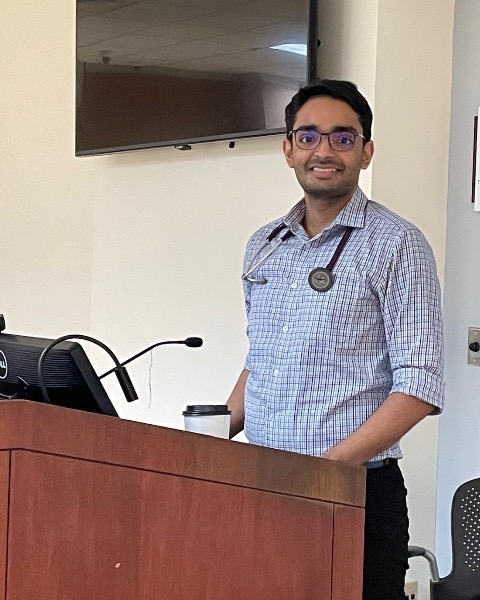Parathyroid/Bone Disorders
(19.13) Transient Osteoporosis of the Hip in a Pregnant Patient: Case Report and Literature Review

Aditya Chauhan, MD
Clinical Fellow
University of Minnesota medical school
Minneapolis, Minnesota, United States
Presenter(s)
Transient osteoporosis of the hip is a rare syndrome characterized by severe hip and groin pain and imaging findings of bone marrow edema. We present a case of a pregnant patient who was found to have transient osteoporosis of the hip.
Case(s) Description :
A 24-year-old female with no significant medical history in her third trimester of pregnancy presented with worsening right hip and right lower quadrant pain over several months. The patient had a previous uncomplicated full-term pregnancy. She had no history of bone disorders, malabsorption disorders, kidney stones, or fragility fractures, and no significant known family history. Physical exam revealed pain with weight bearing on the right hip. Laboratory testing revealed normal calcium 8.1 mg/dL (8.4-10.2), normal parathyroid hormone 16 pg/mL (15-65), normal alkaline phosphatase 82 U/L (20-70), normal phosphorus 3.2 mg/dL (2.5 -4.5), low magnesium 1.6 mg/dL (1.7-2.3), low vitamin D 14 ng/mL (20- 50), low albumin 3 g/dL (3.5 – 5.2), normal TSH 1.17 uIU/mL (0.30-4.70), normal free T4 0.97 ng/dL (0.90-1.70), normal anti-TTG 0.3 u/mL ( < 7.0), normal IgA 136 mg/dL (84-499), and a creatinine of 0.55 mg/dL (0.51-0.95). MRI of the right hip without contrast showed bone marrow edema through the femoral head into the femoral neck with no fracture, suggesting transient osteoporosis. For treatment, we recommended calcium and vitamin D supplementation and a postpartum dual x-ray absorptiometry scan to evaluate bone density.
Discussion :
The literature on transient osteoporosis is limited. Pathogenesis is not well-defined and there is little data to guide treatment options. The prevalence and incidence are not well described, with one estimated prevalence being 1 in 250,000 pregnant patients in their third trimester. Recommended treatment includes strengthening the bone through vitamin D and calcium supplementation, with some support for calcitonin use. Bisphosphonates are not recommended as these can negatively impact the fetus. It is also important to recognize that transient osteoporosis of the hip is not the same as osteoporosis of pregnancy and are different syndromes but are often commonly confused. Outcomes of transient osteoporosis can vary as reported in case studies, from spontaneous resolution to hip fractures. By sharing our case and literature review, we hope to bring awareness and inspire further exploration of transient osteoporosis to prevent hip fractures that can greatly affect the quality of life of patients with the condition.
